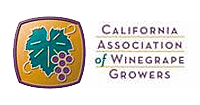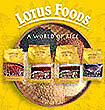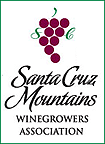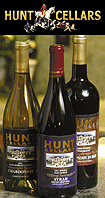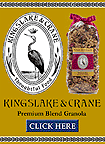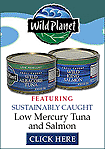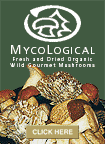New California Wine Varietals Quench America's Thirst for Diversity
Find
Wineries by 43 Wine Varietals and Blends at discovercaliforniawine.com
SAN FRANCISCO - Although California Chardonnay,
Cabernet and Merlot are still by far the most popular varietal
wines in the U.S., comprising more than half of all California
table wine sold in the U.S last year,* recent data shows that
the state's winegrowers and vintners are increasingly catering
to wine enthusiasts' thirst for varietal diversity. From winegrape
acreage to the annual crush, a new crop of "emerging"
varietals such as Pinot Gris/Grigio, Riesling, Pinot Noir and
Tempranillo are gaining in wine production all over the Golden
State. Vintners are also increasingly blending new combinations
of popular and less-familiar varietals.
"Because
of the cultural diversity of California's growers and vintners,
it's only natural that the state would become a "melting
pot" of varietal wines," says Karen Ross, President
of the California Association of Winegrape Growers, who notes
that today the state grows more than 110 winegrape varietals.
"As winegrape growing passes from generation to generation,
California growers' understanding of which varietals grow best
in their regions, AVAs and vineyards has increased exponentially,
resulting in the introduction and resurgence of a wide range
of varietals."
"American
wine consumers are branching out. They still enjoy their favorites
- Chardonnay,
Cabernet, and Merlot - but have become more adventurous and
are more willing to try other varietals such as Pinot Grigio,
Riesling and Petite Sirah to name just a few," says Robert
P. (Bobby) Koch, President and CEO of Wine Institute, who points
out that one of the best places to find out which wineries are
producing these varietals is on Wine Institute's web site at
http://www.discovercaliforniawine.com/wineries where consumers
can search California wineries by 43 different wine varieties
and blends.
This
site's database brings up producers of varietals such as: Grenache,
48 wineries; Gewurztraminer, 32 wineries; Muscat/Moscato, 57
wineries; Petite Sirah, 136 wineries; Pinot Gris/Grigio, 82
wineries; Pinot Noir, 234 wineries; Riesling, 41 wineries; Sangiovese,
98 wineries; Syrah, 315 wineries; Tempranillo, 36 wineries;
Viognier, 123 wineries; and the listings are growing.
These
emerging varietals are a natural outcome of California's ideal
yet varied climate and soil for growing winegrapes. A central
fact of California winegrowing is the long Pacific Ocean coastline,
stretching nearly 780 miles from Oregon to Mexico. With 108
American Viticulture Areas (AVAs), more than 4,600 winegrape
growers and an estimated 3,000 bonded wineries, California grows
winegrapes in 46 of its 58 counties.
Its
tumultuous geologic history yields more than 2,000 distinct
soil types, and each AVA is distinguished by climate, soil structure,
topography and elevation. The cooling ocean fog and breezes
moderate the state's steady sunshine. Combined with the north-south
axis of the coastal mountains and inland valleys, these conditions
create a temperate climate where winegrapes thrive. Unlike some
Old World wine regions, California growers and vintners are
free from regulations that dictate where and how certain varietals
can be grown, enabling greater flexibility in matching winegrapes
to the right soils and microclimates.
Restaurants
in particular have been on the leading edge of featuring and
promoting lesser-known varietals. "Restaurants find that
putting unconventional varietals on the wine list is a competitive
advantage; they use it to attract customers," says Ronn
Wiegand, MW, MS, and publisher of Restaurant Wine, who notes
the trend has taken hold at fine dining establishments from
coast to coast. "Like a chef always trying new ingredients,
restaurants use these "discovery" wines to increase
excitement about the dining experience."
About
Wine Institute
Established in 1934, the Wine Institute is the public policy
advocacy group of 1,100 California wineries and affiliated businesses
that initiate and advocate state, federal and international
public policy to enhance the environment for the responsible
production, consumption and enjoyment of wine. The Wine Institute
membership represents 85 percent of U.S. production and 90 percent
of U.S. wine exports. For more information about Wine Institute,
go to www.wineinstitute.org.
About
The California Association of Winegrape Growers
Established in 1974, the California Association of Winegrape
Growers represents the growers of more than 50 percent of the
gross grape tonnage crushed for wine and concentrate in California.
The statewide association is an advocate for farmers, providing
leadership on public policies, research and education programs,
sustainable farming practices and trade policy to enhance the
California winegrape growing business and our communities. For
more information about CAWG, visit www.cawg.org.
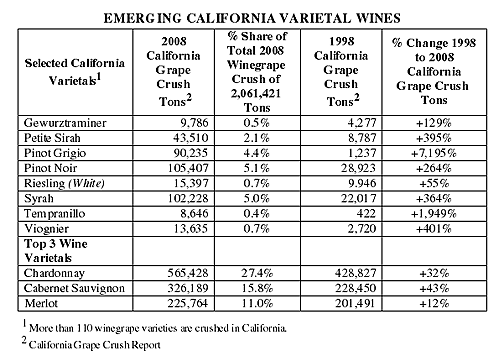
Sources:
*Gomberg, Fredrikson & Associates
*California Department of Food and Agriculture:
California Grape Acreage Report-2007 Crop (click
here) and
2008 California Grape Crush Report (click
here)
Emerging Varietals of california
Although best known for Chardonnay, Cabernet Sauvignon, Merlot
and Zinfandel, California grows more than 110 varieties of winegrapes.
Below is a summary of varietals that are enjoying new found
popularity. To search for California wines by varietal and blend,
visit www.discovercaliforniawine.com.
White
Varietal Wines
Gewürztraminer (geh-vertz-tra-mee-ner)-Grown generally
in cooler climates, Gewürtraminer produces highly perfumed
wines with spicy aromas and full flavors which are often compared
to lychee nuts, vanilla and ginger. Wine styles ranges from
dry to sweet.
Pinot
Gris/Grigio (pee-noh gree/gree-gee-oh)-Depending on the producer
and where it's grown, this grape can be something of a chameleon.
Often the wines are crisp, sleek and refreshing with delicate
lemon flavors, but in some cases, they can be unctuous, spicy
and full-bodied.
Riesling
(reece-ling)-Sometimes called White Riesling, this varietal
can tolerate colder winegrowing climates. Rieslings are known
for their delicate floral and fruit flavors, and depending on
the vinification, can be made in a range of styles from bone
dry to very sweet.
Viognier
(vee-yohn-yay)-Traditionally used in blends, Viognier is becoming
more popular as a single varietal wine. Usually made in a dry
style, this low-acid varietal can be powerful, rich and unctuous
with complex fruit and floral aromas and flavors.
Red
Varietal Wines
Petite Sirah (peh-teet see-rah)-With sturdy, long-lived vines,
Petite Sirah (sometimes seen as Petite Syrah on wine labels)
is prized as a blending grape for its dark, inky color and intense
tannin. On its own, it's a dark purple, full-bodied and full-flavored
wine that can age for ten years with proper cellaring.
Pinot
Noir (pee-no nwahr)-Known as a somewhat finicky wine grape,
Pinot Noir is planted mostly in the cooler, coastal climates
of California. Prized for its smooth, velvety texture and range
of aromas and flavors, Pinot Noir produces medium-bodied wines
redolent of cherries, berries and spice.
Syrah
(see-rah)-Introduced to California in the early 1970's, Syrah
is a full-bodied wine known for its deep color and juicy texture.
Grown in both cool and warm climates, the wines can be vibrant,
elegant and structured or rich, bold and spicy.
Tempranillo
(tem-prah-nee-yoh)-One of the primary winegrapes in Spain, Tempranillo
produces wines that are hearty, acidic and full bodied. Often
described as having characteristics of bright cherries or strawberries,
the grape grows well in warm climates.




